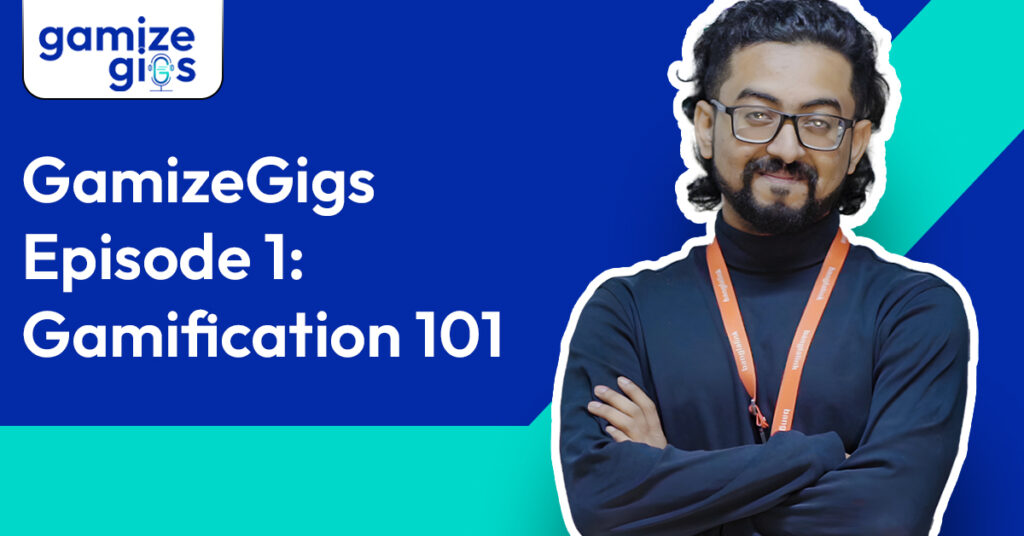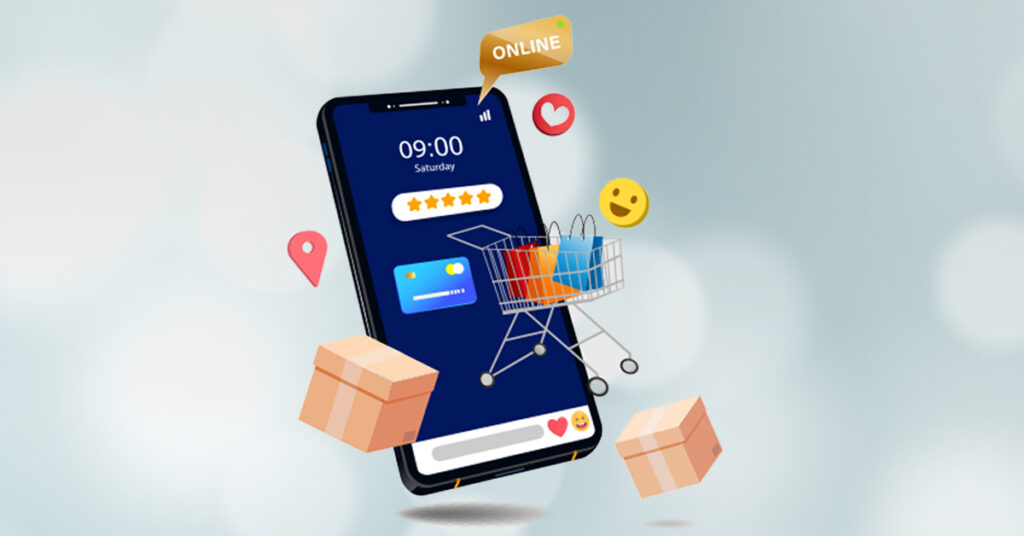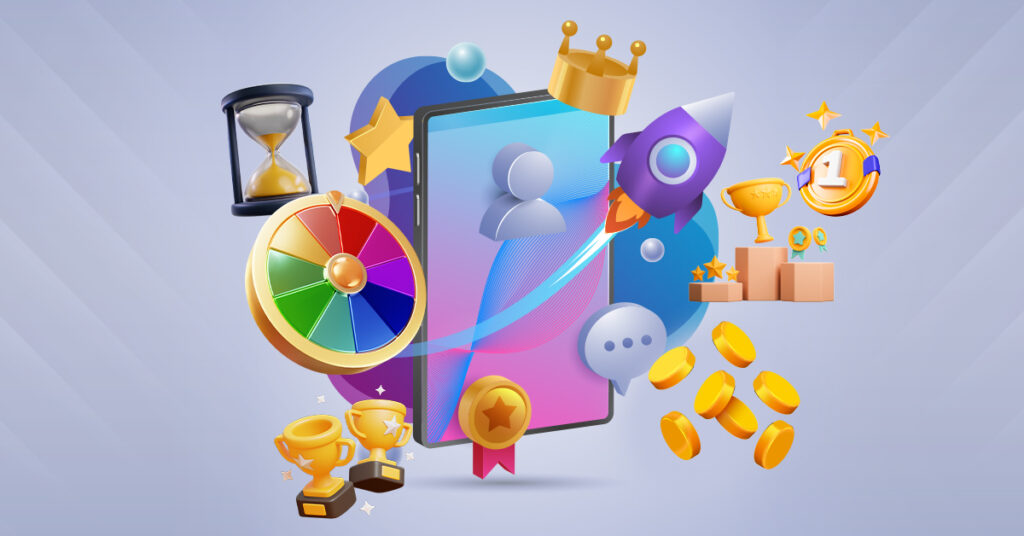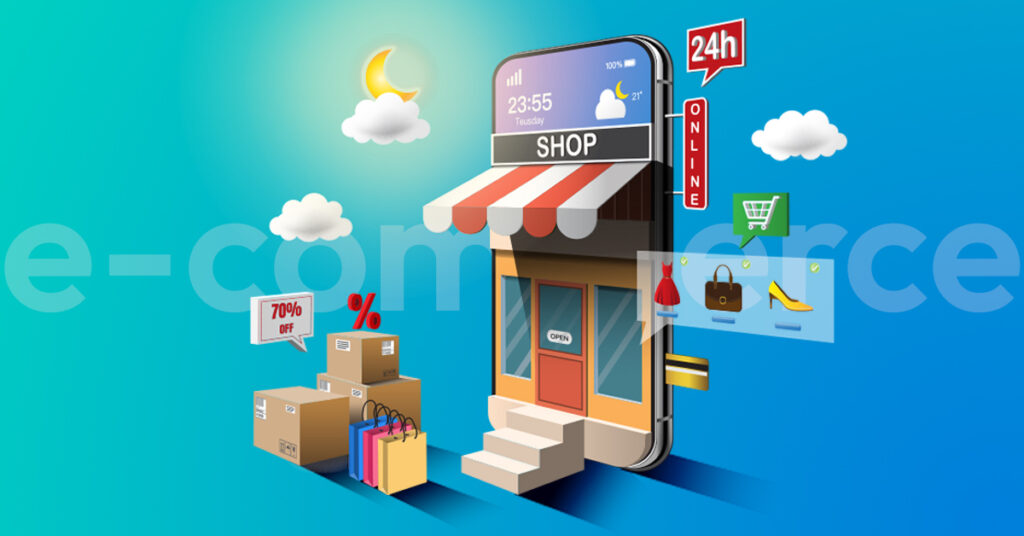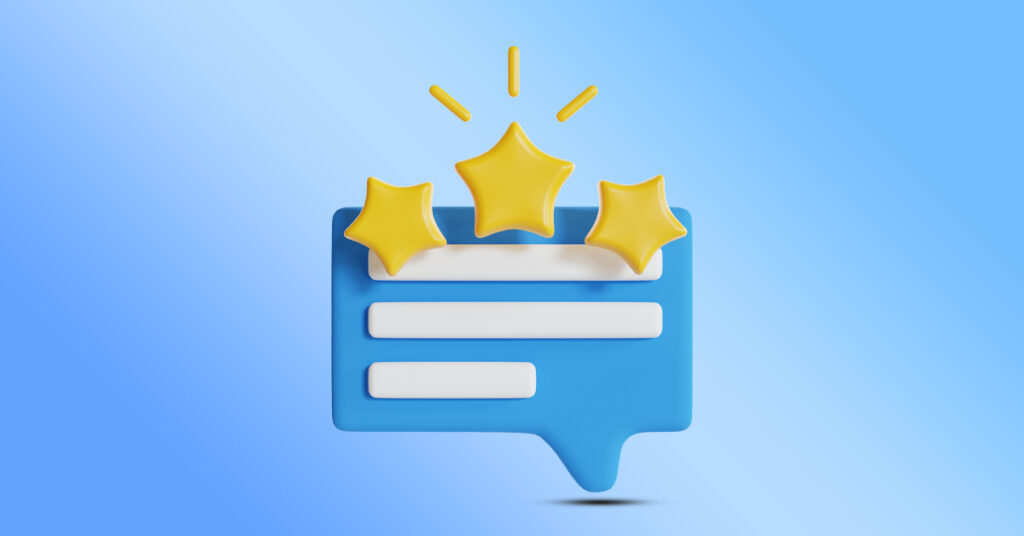Follow your passion, and success will follow. Blessed are those who get to turn passion into a profession, and last week, we had a chance to speak to someone who lives by this.
The first episode of GamizeGigs, our podcast series of cracking the acquire, engage and retain mantra with top industry leaders, finally took off where passion met profession.
Yes, Megha Saraswat, Product Manager at OnMobile, chatted with Abdullah Hill Nahian, Digital Gamification and Engagement Manager from Banglalink, on ‘Gamification 101’.
Read how he drew a beautiful picture from his gaming to gamification days with a shade of his learnings on gamification case studies, Octalysis framework, benefits and much more.
Meeting the Gamer Side
Megha: As I recall, you’re a hardcore gamer, and you like to play games a lot. How often do you play games, and what are your favorite games?
Nahain: Let’s travel way back when it started. You see, my mother is a computer science teacher. So, when I was a kid, there was always a desktop lying around. So before I even started talking, I knew how to work around computers.
Just then, just right there and then, I started gaming.
I constantly used to nag my mom to start the PC because I couldn’t even start the PC by myself. But I could play games. So that’s how it started. I played a lot, and there are very few games that I might not have played.
It started before I even started going to school, and it’s going on till now. Gaming is an escape route. It’s a massive entertainment or recreational activity for me.
Now, I’m a full-time worker. I go to the office, and once I return home, I still make some time, even 30 minutes or 1 hour, to play games.
There are movies. There are sports like football. There are so many recreational entertainment activities for so many people. Gaming is just like that. Gaming is just like another sport. Another entertainment opportunity or scope. Just that.
I have played casual games. I have even played competitive games. Back in school or college, there were that Clash of Clans, Clash Royale sorts of trends.
I participated in these sports and even earned money through playing games. So yeah, it was fun. Once I grew up, the amount of games that I played lessened, but the time that I gave to games didn’t.
Speaking of games I’ve tried, there are many. I play a lot of offline games like Red Dead Redemption. I’ve finished it a number of times.
In terms of competitive games, I used to play Valorant. Currently, I’m playing Rocket League, and it’s a great tool, a great way to bond with your friends.
All of my friends are also working. If you want to plan a hangout with them, to go out and visit some places to eat at some restaurant, it’s very hectic. Managing time is hard.
You can’t just leave your home and make time for everyone. But you see, if you just have to sit in front of your computer and open up your desktop to play some games, it’s just that everyone happens to manage time for 30 minutes or 1 hour.
And it’s not just about playing games. While playing games, you are having so much fun; you are communicating with your friends. You are sharing stories with them. You are sharing about your day with them — What happened? Whatnot?
It’s a catch-up session. Gaming is a way which enables so many other things. I hope I don’t let go of this passion or hobby of mine ever.
You know, there’s this kid inside me who envisioned playing games all his life, and I don’t want to let go of this kid. So yeah, let’s just put it that way.
Megha: Yeah, and playing games also improves a lot of self-concentration in us and strategy. If you are playing games like Clash of Clans, or if you’re playing PUBG, you will also improve your strategic skills. So that’s something that you learn from games.
It’s not always a bad thing to look at that: okay, you’re playing games. And I always look forward to people who like to play games because my industry is gamification. How can I not pick up from them on what it is that hooks users to a particular game that they go back to again and again and play them?
So yeah, I get where you’ve come from. I’m more of a casual gaming player; my go-to games are Subway Surfers. Even if I’m in a meeting, and I don’t have to speak a lot, I’ll just play Subway Surfers.
Nahian: Oh, that’s a fantastic gamification! You see all those coins popping up.
Megha: Exactly! And there are daily challenges that you see like you have to collect the letter of the day or have to complete a word of the day. That motivates me to finish at least three challenges before I sleep.
That’s my target. Playing games keeps you engaged, plus you learn a lot of things. That’s a win-win situation for a player and a gaming app.
If you can bring the users back to the application, you have cracked the game of how to entertain and engage users for a longer duration.
Are Games and Gamification the Same?
Megha: You have played a lot of games in your entire life. Right? And now you are into this gamification space. You understand games and gamification both together.
So, are games and gamification the same? What is gamification precisely, according to you?
Nahian: I face this question every day in my workplace. My family and friends always ask me, “What do you do? Do you make games or what?”.
Megha: Your profile itself is Gamification and Engagement Manager. That’s an exciting job role.
Nahian: For sure. So about games. What are games? In games, there are specific missions and challenges. There’s a particular start point and endpoint. You have to do something to earn something.
You have to level up. You have to kill a dragon, destroy your enemy or save someone. You have to solve a puzzle. There are so many things that you have to do.
There’s a specific endpoint, and it is very structured. In a game, you aim for something. You want to accomplish it. Once you do it, you feel fulfilled. You feel recognised, and that’s how games work. Games are just another sport.
But what is gamification? Let me put it this way. In games, there are some game design elements, some game mechanics and game dynamics. Right?
So, game mechanics are the building blocks of games. For example, say Points, Badges, Leaderboards, and Progress bars. The specific aspects that create a game and its results are game mechanics.
Now, these affect you psychologically in a way that motivates you to do something. The behavioural aspects that you feel through game mechanics are rather game dynamics. For example, when you are gaining badges or coins,
You feel valued in terms of status. When you are levelling up a leaderboard, you have this fulfilment feeling of accomplishing something — this human desire to achieve something.
Then, there are some collaborative games. When you level up, reach a mission, and complete a game with your friends, you have your joint side develop through gaming.
So, game mechanics and dynamics, when put together and designed from a game design point of view in a non-gaming arena or environment, is gamification.
You can even gamify your lifestyle. You’re not essentially playing a game. But when you put these gaming elements, these gaming mechanics and dynamics into a non-gaming environment, then you are gamifying whatever environments that you are putting these elements in. That’s gamification.
Megha: That’s a very apt definition in a layman’s term about gamification. And you rightly said we can gamify our entire life if we want to.
To give you an example, when I initially started my gamification journey with Gamize, I used to read a lot about how industries are moving towards gamification and what enterprises and brands have adopted gamification.
That time, I had a little experiment done on me that if I work for longer hours, I want to reward my body with something. So, if I extended one or one and a half hours of my daily schedule, I’d order a pastry for myself.
Or anything that I want to eat that day. Because I am a little health conscious, I won’t divulge into fast food that often. But if I have worked a lot, and my body has supported me, I would like to reward the body.
So when you stay for a longer duration in the office, if you have a deadline that you have to meet, there is a negative connotation in our minds that, you know, it’s nine in the evening, you have to go back.
You can’t do any more work. But since I installed this reward mechanism in my mind, my mind has copped up, and there are no negative thoughts about it. I have started enjoying my work more than cursing now, and then what has happened to me?
If you understand the gamification, you don’t always need a digital version; you can always gamify it offline.
To give the best example, the Indian cricket team fielding coach, T Dilip, has gamified the World Cup 2023 by giving Best Fielder medals in the dressing room after each match.
Nahian: I didn’t know that. That’s great!
Megha: Yeah. If you do good fielding in a match, they have a ceremony afterwards. It doesn’t matter if India won or lost. It’s been a success, as players look forward to receiving medals.
If the person has done a given 100% on the field for India, they will get a medal for it. So, that’s an excellent gamification technique that the Indian cricket team has used.
That’s how the reward mechanism or gamification works in real life. It motivates the user to perform better the next time.
From Gaming to Gamification
Megha: I understand; we both are really into gamification and games. But I wanted to know how you developed an interest towards gamification. You were into gaming, and now you are a Digital Gamification and Engagement Manager expert for Banglalink.
What made you inclined?
Nahian: When I started working at Banglalink, I worked on different projects but eventually landed on the gaming team. I worked in the gaming team in Banglalink for almost half a year or eight months.
I worked in gaming, full-on dedicated. Later, we came up with this strategy that we had to create a super Telcos app. So, in Bangladesh, apps were claiming to be super.
But what is a Super app? It gives you a native experience of all the Digital services in one app only. It’s not a redirecting platform, only.
Apps are claiming to be super where you can click on a service, and you just get redirected to some other service on a web page or another app.
When we came up with the decision that our app should be a super app, we created a model called the 6C model. If I have to break it down – it’s Connect, Content, Commerce, Community, Care and Courses.
You name any digital service in a digital industry; we can put that digital service or industry into one of these Cs; we call each vertical C. To us, Connect is essentially the Telco side.
Content caters to the entertainment side with games, music and videos, obviously the content curation. Commerce is, you know, shopping, paying bills and stuff. Care is the health tech. The course is ed-tech.
Now, there was still a missing block, a missing piece. So we got to discussions. I was discussing this with my Line manager. Our target customers will be different groups used to various digital services.
Some people will be coming to the app only to listen to music. Some people would come to the app only to play some games. What if there was one nucleus for all these engagements? What can that be? How can we engage all sorts of customers for whatever they like?
Then, we decided that we had to gamify our Super app. But it’s easier said than done. How can we gamify everyone?
That’s when we created our 6th C. There were 5 Cs earlier. We came up with our 6th C, which is Community, to deal with all the people, all the users of our app.
As we are also going big (as an operator-agnostic app), we are not only catering to users in Banglalink right now. There has to be a universal hook to engage all the users, and for the community, that hook would be Coins. Our reward system would be coins.
For gamification, there has to be a fixed currency system in place and a fixed reward system in place. We can give out vouchers, for sure. But if there was also a currency convertible to any other aspect that’s still better, that’s the final catch.
So now, based on that idea, based on that vision, we are taking baby steps. We are going there eventually. We have already done our app’s community launch.
Soon, we will be launching our Points systems along with some gamification. Before this, we used Telco products and vouchers to gamify our community.
But we have a big plan. There are many technological challenges because we are the pioneers in our country to create such solutions. We will learn along the way.
We want to create something that the whole world can follow. That’s how I came into gamification.
Megha: I was returning to our initial conversation when we started; there were 5 Cs. Then, Banglalink wanted to introduce the engagement layer on all 5 C’s. That’s how gamification came into the picture.
That was a huge and bold step taken by Banglalink, and we will be building a super app. And it doesn’t happen overnight. There’s a lot of background work and research that goes on there.
That’s a different ball game for Banglalink as well, getting into courses, getting into content, getting into Care kind of a vertical.
How Gamification Helps Acquire, Engage and Retain?
Megha: I wanted to understand how effective it is that you see gamification’s role in acquiring, engaging and retaining existing users.
Nahian: These three things that you’re talking about: Acquisition, engagement, and retention are the main three pillars of any customer life cycle. Right? You must acquire, engage and retain them, and gamification does that.
How? Let me give you some examples based on my experience and what others are doing. You see, everywhere in any app you use right now, any service, not even a digital service, any service or product you use right now, has some sort of acquisition strategy through a referral program.
You incentivise your customers. You tell them, like, you know, you refer this product to your friends and family and for ten referrals, you get this. For twenty referrals, you get this.
You are setting a target for them. You are setting up a Progress strategy for them. You are eventually rewarding them. Along the way, you are acquiring some customers coming into the app.
But your job still needs to be done. You have acquired customers, all right. Very good. But now you have to engage them and eventually retain them. So now here, your product has to be very good. Your product has to fulfill the needs of your customers, for sure.
That’s a no-brainer. But what can you do more than that? What can you do to add value and differentiate your product from your competitors?
Now comes the engagement part. Your consumer is using a product once or twice. How can you bring back your customers into your solutions again and again?
Let me give my example. I use Foodpanda in Bangladesh to order food or for different delivery services. But I used to call whatever I wished for when my friends came over or craved something, not regularly.
I changed this, and that’s because they do gamification well. Oh, my God! They have contextual missions in place. They know what I want and promote the restaurants I order frequently from.
One day, I saw they were promoting a subscription to me. “But I don’t need to spend additional money. Why would I do that?” I thought when I saw their subscription offer.
The offer said if I placed 15 monthly orders, I’d get them all for free delivery. I’m already doing 10-12 orders per month. And I can do 15 orders for free delivery. Okay, yeah, let’s do it experimentally, I said.
I did analyse this, and yeah, it’s a better financial decision, so no worries. And now, you see, I used to order 10-12 times previously, and just to meet the benchmark of 15 free deliveries, I call at least 15 times, even more than 15 sometimes.
You know I am being like habituated to ordering food, and the app’s ARPU (Average Revenue Per User) is getting increased.
Take Uber, for example. When Uber came to Bangladesh previously, they had rapid, hard discounts on every ride that we booked. If you make five rides or ten rides, you get additional discounts.
I even went from one place in Dhaka to another for only 20 Taka. So that’s very little. And back then, we weren’t used to Uber’s thought process and strategy that we could share rides. That was very new. I’m talking about 10-12 years ago from now.
We were introduced to the ride-sharing concept by Uber. We started using it because the app was very, very gamified. Today, everyone, at least those who use Uber, is attached to the app.
So gamification increases your stickiness by a lot. We have engaged our users.
We know how they get engaged and how to retain them. That’s the last, you know, pillar of the customer life cycle, how to keep them.
When you introduce your reward currency, for example, when you have a specific reward system, your customers see that they are constantly accumulating some rewards, some points.
They have to stick to the app to have enough coins or points to avail something afterwards finally. And that’s how you retain your users along the way.
Users stick to the app so that they don’t lose their coins or whatever they have inside the app. That’s how they get retained, just to see what’s next, just to explore.
Megha: That’s true. And with this, you also brought up user stickiness and driving the user behaviour of how gamification can help to introduce a new feature or something new in the application.
Apart from acquiring engagement and retention, making users habituated to one of the features falls under engagement. But again, it’s an essential part of how we can use gamification, nudging the user to do what we want them to do.
Like your example of the Foodpanda app, they wanted you to subscribe to that service. Initially, you would have analysed the pros, cons, and trade-offs.
But eventually, you gave in because you were happy with the service. As you said, the core product has to be good. Alone, gamification can only do a little.
So, you were satisfied with Foodpanda’s core product. They used a subtle way of gamifying and nudging you towards the subscription service. And now here you are, you know, using Foodpanda at least 15 times a month to order and get the benefit.
Whenever I encounter certain use cases and case studies of gamification, it surprises me more as a concept.
I don’t think anybody has cracked how you can gamify everything. Every day it’s a new learning for me, even though I’ve been in this space for the last two years.
Octalysis Framework of Gamification
Megha: Has any gamification application apart from Foodpanda since we just spoke about it caught your interest or that you think is worth sharing?
Or if you have implemented something in your application and feel that this is something that, apart from the average gamification use case, is also how we can use gamification.
Nahian: Yeah. So far in my space, from all the apps or services I have used, I want to mention two specific apps that were amazing to me, and I could see all the gamification drivers applied to each of those apps.
One is Duolingo, a language-learning app, and the other one is Clash Royale, which is a game. Gamification can be found the most in games, for sure. But Clash Royale is the only game that has stuck with me till now.
It is the oldest game that I’ve been still playing. Because, you know, as a gamer, I have minimal attention span. I cannot keep on playing a game for the long term. Clash Royale I’ve been playing for more than ten to twelve years easily.
I mean, since its inception. So when Clash Royale came, I just installed it from my behaviour. You know, I have to install new products and apps and try them out. And the gamification there really stayed with me.
If I touch base upon the gamification types they used, including Duolingo, I will mention this research done by Yu-Kai Chou, a pioneer of gamification and behavioural design.
There, he had this complete gamification framework done. Initially this year, when we decided that we were going to get into gamification, I did some preliminary research.
That’s when I came across his Octalysis framework, where there are some eight pillars or eight drivers that he said gamification tries to achieve.
Both Duolingo and Clash Royale are achieving all eight drivers.
Pillar 1: Epic meaning
So the primary driver or the first pillar of this Octalysis was epic meaning or calling. Epic meaning or calling is everywhere, even in the Telcos we’ve used. We use contextual PNs (Push Notifications). We use words or messages that everyone likes.
We make users feel valued. If they are not using the app, we make them valued by saying we miss you, come back and stuff like that. Whatever people want to hear.
And when the user feels great about it, they would want to try it out again. So it’s giving them a sense of calling by placing contextualist messages to bring back churned users at times.
Pillar 2: Accomplishment
What’s an accomplishment? You have to allow your users to give them a sense of feeling that they are getting closer to something.
Here comes setting up progress bars, setting up targets, and saying you are just this close to achieving this milestone. Give them targets of like, if you just complete 2, 3 levels more, you will gain this much money.
So give them a sense of accomplishment that you are this near this. You have to do all these tasks to achieve this final milestone. You will get this many rewards, so always giving them some accomplishments, feeling, always giving them the nature they are, getting near to a goal that helps them.
Pillar 3: Empowerment
When we identify users in the app or any solution, we have to show them what they have got instantly. They have won some coins.
You have to show users that they’ve got some coins added to their wallets. So, you have to animate those feelings and install feedback on what the users are doing. Yes, the users might also fail in achieving something along the way, like Duolingo.
I used Duolingo when I learned French back at my university. So even when you fail to do some lesson quizzes,
Duolingo won’t disappoint you, saying you failed and the journey ends. No. Your answer was wrong, but you can improve by trying the subscription. So they are upselling their product.
Pillar 4: Ownership
Ownership is when the user is achieving in the app or solution. So, I was talking about having some points and being able to redeem them later. In any game, you see, there are so many things that you can buy in-game elements or in-app elements.
You can purchase different customisations to your profile, some profile borders, some clothing for your character, or some currencies or coins with a monetary value when you burn them.
When you accumulate some of these coins, you own them, like you won’t want to lose them, right? You’d like to eventually use them or boast about them to your friends and family like, you know, I have got these badges. What have you got?
So, gamification drives ownership driver.
Pillar 5: Social influence
Social influence is everywhere on Facebook and other social media. In any game, whenever you do something, there’s always a share button. Share it with your friends. Share it on Whatsapp, and share it on Facebook.
Why would I share it? I want to let them know that see I have done this. Do you want to join me? And like through this, apps are also acquiring customers and are helping the users to get recognised. They are boosting themselves.
So gamification is tapping into this human desire and psychology to get recognised. It’s a science. There are so many areas in gamification which are still unexplored, and a lot of research is yet to be done by us. We have just begun to scratch the surface.
Pillar 6: Scarcity
Another driver is Scarcity from the Octalysis framework of gamification and behavioral design by Yu-Kai Chou.
Scarcity means the willingness to have something you might not be able to get otherwise easily.
For instance, in a spin wheel gamification, you come back to the app again and again to spin the wheel. You look forward to getting something you might need, so you look forward to it, which is a jackpot.
Pillar 7: Unpredictability
Then there are also other drivers like, you know, unpredictability like you don’t see what you’ll get. Spin Wheel and Scratch Cards are perfect examples of this. You scratch a card, you spin a wheel, and you don’t know what to expect. You look forward to it. You want to get a surprise, and well, everyone loves to get a surprise.
So you keep on spinning a wheel sometimes, anticipating to hit a jackpot. So, this unpredictability and curiosity is another driving factor for gamification.
Pillar 8: Loss and avoidance.
So Snapchat does it well. Oh, my God! My little cousins, my little sisters! They keep on using Snapchat. Many of my friends also use it right now. Students use it. Do you use it, though?
Megha: I used to use Snapchat during my college days, but not any more.
Nahian: So it’s a no. Okay, streaks. You don’t want to lose your streaks. I asked my sister you sure can lose it; do it once. She is like no, I can’t lose it. I’ve my streak going on with my friends. Let me send them a snap real quick. I have a 101 streak going on.
So this sense of loss where you don’t lose your streak, whatever you’ve accumulated, is another driving factor of gamification.
So this man, Yu-kai Chou, has cracked it. You can see any gamification framework or strategy have all these driving factors come together.
Megha: I remember once I’d maintained a Snapchat streak for an entire year with my friends. Sometimes, if we don’t have anything worth sharing, we’d share a black picture or a picture of a sky. But we wanted to see how long this streak will go.
Nahian: There is no reward. Generally, gamification works best if you reward a user for a particular activity.
Megha: But in Snapchat, it was the element of social recognition. Right? You are maintaining a streak. So your friends and others can also see where you are. You know 200 days that you are sharing this streak, so that requires a lot of dedication to remember each day waking up. And you have to send a photo to your friend. But yeah, Snapchat cracked that daily streak concept well.
Spin Wheel: A Low-Effort Gamification
Megha: You explained that Octalysis framework well. I have read it at least 3 to 4 times, but all of the time, the articles were too much to read, and I couldn’t complete them. However, I was aware of the eight drivers.
But I wanted to see how others interpret Yu-Kai Chou’s research, but you nailed that, Nahian. So I’m sure you get exposed to different activities because you play a game a lot.
Apart from that, you are also very curious to know what application is running and which kind of gamification activity. So, what activity or gamification element clicks for you? Which is your favourite gamification activity?
Nahian: Name any game that I’ve played. Most of the games have had some sort of spin wheel. It is like spinning a wheel, and you look forward to where your pointer drops and to hitting a jackpot.
So, this anticipation to hit the jackpot and coming into the app now and then just to do the spin wheel. And you know, for every spin, I’m getting some sort of things or some little tad bits, and that’s okay because this anticipation that I will hit the jackpot drives me to come back.
Once you get the jackpot, you might share it with your friends. Look what I got in the spin wheel! Essentially, the spin wheel goes hand in hand with all the eight drivers of the Octalysis framework.
So, we even use the spin wheel in our MyBL app. You can use it in so many unique ways.
It’s not just there will be some quadrants, and you would be falling in any of those quadrants.
With spin-the-wheel gamification, there’s this feeling, this muscle memory built into every one. If people visit a restaurant and see a spin wheel with discounts, they know what to do instantly.
You don’t have to teach them that you have to spin the wheel, and whatever quadrant you land on, you will get this price. You don’t have to teach anyone that. Everyone knows how a spin wheel works.
And everyone knows what to expect. So it’s a very low-effort gamification.
On top of that, if you can customize the quadrants, you can convert your spin wheel into so many other things. Transform it into a field, put on runs on each quadrant, and make it into a cricket game.
You can promote one of your products on a spin wheel, and you can program it so that every user who lands on the product is acquired.
You can also acquire users for one product to another. You know, we promoted one of our products in the MyBL super app and people from the MyBL app installed that other product.
We had a massive response. Thousands of users installed our app every day. So, spin wheel, if done correctly, is a very, very good gamification. I am not still bored of it.
I’ve been playing games forever, and whenever I see a spin wheel, I can spin it anytime. Also, spins should be limited. There’s always a limit on the number of spins so that you have the look-forward factor working in.
So whenever I see there are some spins left, I would for sure spin and check what I get. Spin Wheel is the best gamification template for me till now.
Megha: I agree with you. When discussing the spin wheel, you don’t have to teach people what they have to do there. Everybody knows that.
There is a spin button, or even if there is no button, then you have to give it at least a try on the wheel to see if it rotates. So, that’s a straightforward, simple, and very first activity that any enterprise or application can adopt.
That’s a bang-on point you mentioned because applications don’t want users to put their brains behind a small gamification activity. Okay, what next should I do? It’s self-explanatory.
So, we come to the last question of our episode. Tell us the three points on why one should adopt a gamification strategy or add a gamification engagement layer on their application or website.
What are your key takeaways?
Nahian: We just explained the three pillars as to why you should adopt gamification. It’s acquisition, engagement and retention. Gamification can be that final puzzle piece to help you do just that.
So yeah, only for these three things. If you just try out gamification, you can see what magic it can do if done correctly. You know, gamification is not a fit-in-all solution. You can’t enforce gamification everywhere. Don’t do that.
But if you know the product, you know what your customers want. If you know the entire framework and understand your customer’s technology, we can do the perfect gamification for that product only to fulfill all these three pillars of the customer lifecycle – acquiring, engaging and retaining them.
That’s where gamification comes in.
Megha: That’s true; like you rightly said, you must first understand the product and what the product is offering to the users. Secondly, if your users are interested in gamification, you have to understand the users first.
Secondly, are the users interested in gamification? If it’s a B2B product, what kind of users you’re catering to? If it’s merchant-based, what kind of gamification activity can excite a merchant to do more transactions on an application?
If it’s a B2C, you must understand different user personas who will interact with what. So yeah, as you rightly mentioned, gamification is the final puzzle piece.
But for that piece to fit in, you have to understand the product and the users of that particular product.
You cannot just enforce gamification and say it is not working. It will work if you understand the product, your users and what activity will motivate users to use the product.
This explanation was perfect and short for why to adopt gamification. Thank you so much, Nahian. It was a very insightful session.
I had a lot of things to learn from you. We constantly interact with each other. I always say to everyone I am more of a listener when it comes to gamification than being an expert because I want to know the perception of users.
For me, you are also a user. So what taps into your psychology, how you will interact with an application, and how can I bring a gamification element to it? That’s how I learn.
It was a wonderful chat on gamification, and I hope our audience likes it, too. And there are a lot of takeaways from our conversation. Nahian shed a lot of light on different applications that he uses, and if you use it in future, I hope you also understand the gamification element of it.
With this, we arrive at the end of our first episode. But there’s a lot more in the store for you. We’ll be back soon with a new episode of #GamizeGigs. Thank you so much.
Nahian: Bye.
Do you have any thoughts on our first episode of GamizeGigs and gamification? Contact us here.

